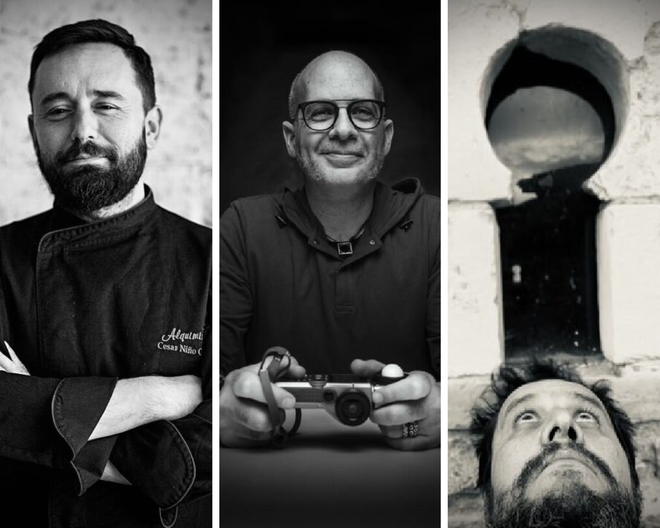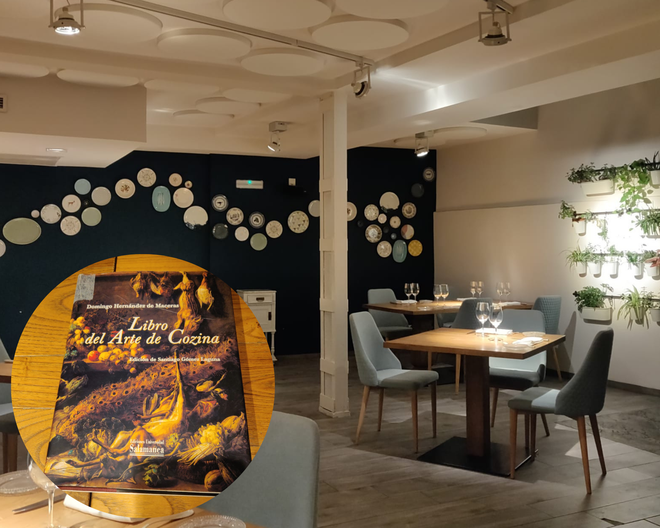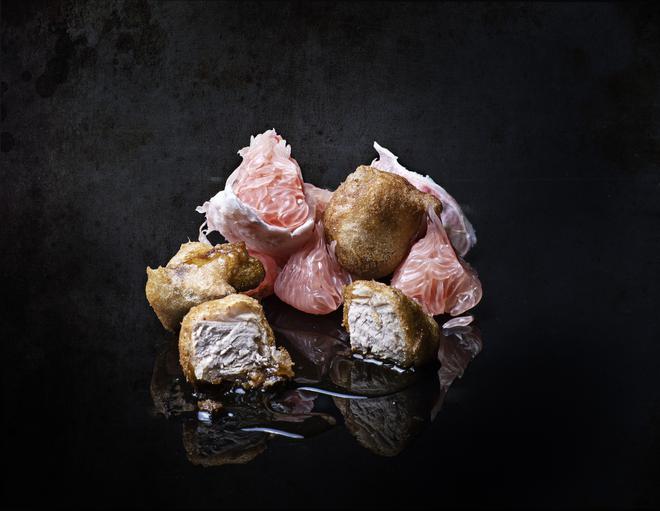My time in Salamanca, a UNESCO heritage world city in Madrid, is a veritable time travel across centuries. But it is my last dinner in the golden city — named after its yellow-tinted local stone — that encompasses this the most.
At El Alquimista, chef César Niño’s five-course menu celebrates local produce, Spanish cuisine, and his Catalonian roots. We sample Ajo Blanco, a velvety Spanish almond soup that we chase down with pull-apart bread and swipes of hummus. Umami-rich vegetarian farinato sausages follow, and lightly sautéed trumpet mushrooms served in a wild nettle sauce. With every dish, Niño narrates a story rooted both in the past and the present.

The conversation organically moves to food history and I learn that Niño has recently released a crowd-funded book, 1607 - The Stoves of the Colegio Mayor (published last December), with photographer Luis Lorenzo and gastronomic writer-journalist Santiago Huete. It is a re-imagination of a recipe book written in 1607 by Domingo Hernández de Maceras, a cook in an old Students Residence belonging to the University of Salamanca, called Libro del Arte de Cozina.
The original, he shares, is the only book published between the 15th and 17th centuries that documents the food of the masses — from torrijas (French toast) and bollo maimón (sweet from Salamanca) to rare recipes such as stuffed carrot and frog legs blancmange. “The soup you had is an evolution of what our forefathers consumed,” Niño says.

The research was part of Huete’s doctoral thesis, on the life of Maceras. “This period is very important in the history of gastronomy in Spain because it is the last form of Spanish cooking before the products from America, such as potatoes, peppers, corn or cocoa entered it,” says Huete, adding that though the book was “written 100 years after the Discovery of America, the cuisine it shows is pre-Columbian”.
Through a baroque lens
Revisiting the past
Niño has recreated and reimagined 30 recipes to suit today’s palate. “I may fine cook a stew or reduce a sauce as a paste,” he explains. “I studied how people lived in the 17th century and adapted it to our century. Neither physical activity, temperatures, economic capacity, nor the cult of gastronomy are the same today. In 1607, the evolution to more delicate flavours and textures is very clear,” he says.

While the dishes from the book are not on the menu (Niño hosted a ‘reward dinner’ earlier this year for select customers), many of its nuances can be tasted in the restaurant’s offerings. Be sure to check with the chef for a chat on Spanish gastronomy, and if you are keen to try any dishes from 1607, Niño may host more special dinners in the future. Keep an eye out on elalquimistarestaurante.es.
Dine like Don Quixote
The independent food writer and journalist is based in Mumbai.







